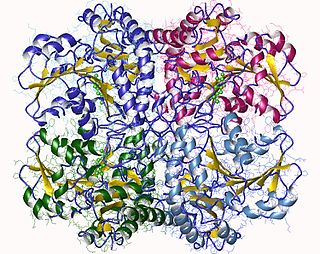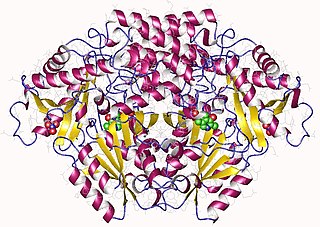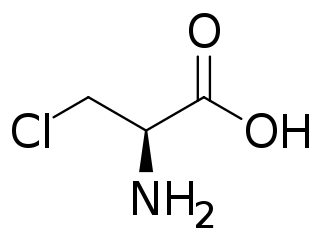| S-carboxymethylcysteine synthase | |||||||||
|---|---|---|---|---|---|---|---|---|---|
| Identifiers | |||||||||
| EC no. | 4.5.1.5 | ||||||||
| CAS no. | 124671-39-2 | ||||||||
| Databases | |||||||||
| IntEnz | IntEnz view | ||||||||
| BRENDA | BRENDA entry | ||||||||
| ExPASy | NiceZyme view | ||||||||
| KEGG | KEGG entry | ||||||||
| MetaCyc | metabolic pathway | ||||||||
| PRIAM | profile | ||||||||
| PDB structures | RCSB PDB PDBe PDBsum | ||||||||
| Gene Ontology | AmiGO / QuickGO | ||||||||
| |||||||||
The enzyme S-carboxymethylcysteine synthase (EC 4.5.1.5) catalyzes the reaction
- 3-chloro-L-alanine + thioglycolate S-carboxymethyl-L-cysteine + chloride
This enzyme belongs to the family of lyases, specifically the class of carbon-halide lyases. The systematic name of this enzyme class is 3-chloro-L-alanine chloride-lyase (adding thioglycolate; S-carboxymethyl-L-cysteine-forming). This enzyme is also called S-carboxymethyl-L-cysteine synthase. It employs one cofactor, pyridoxal phosphate.









